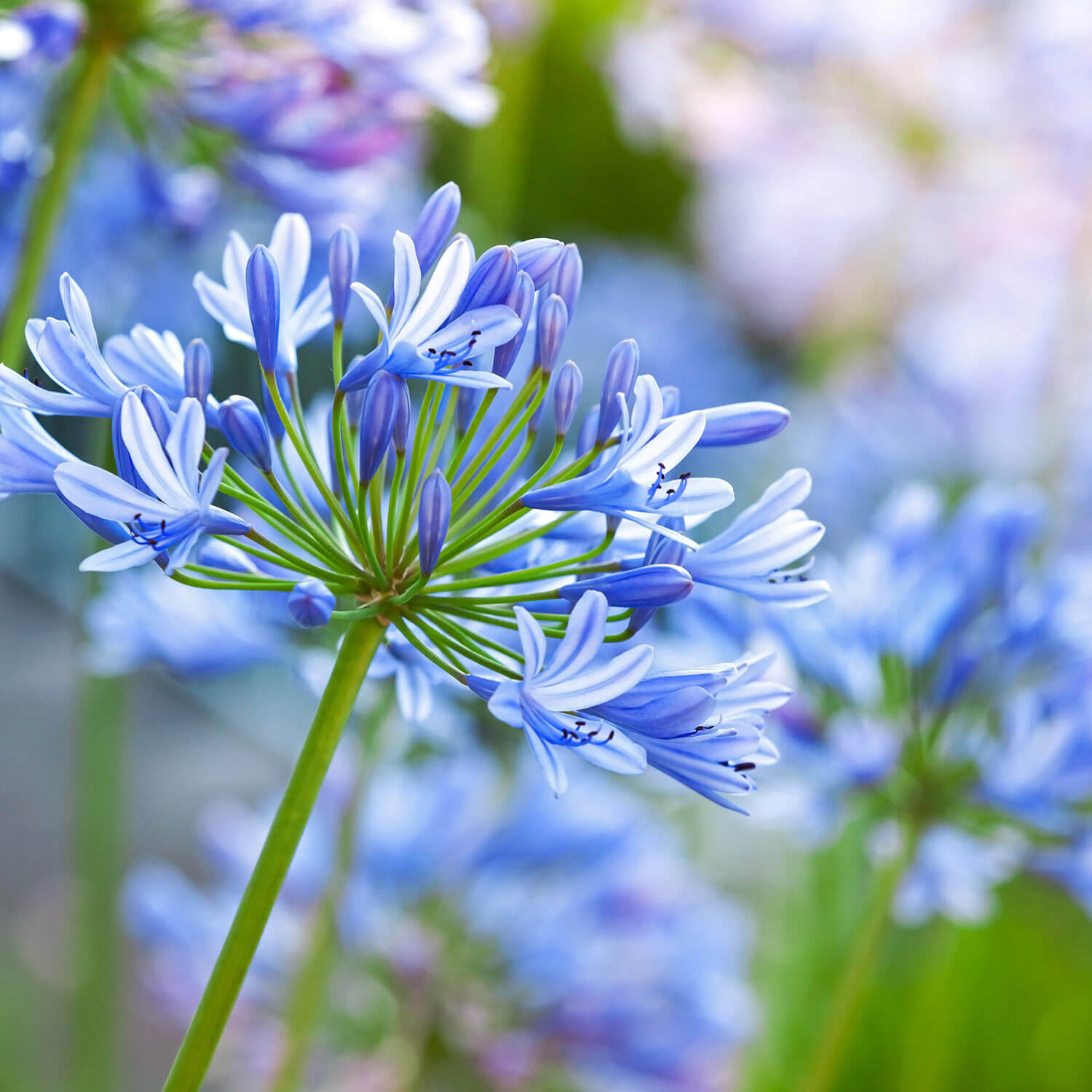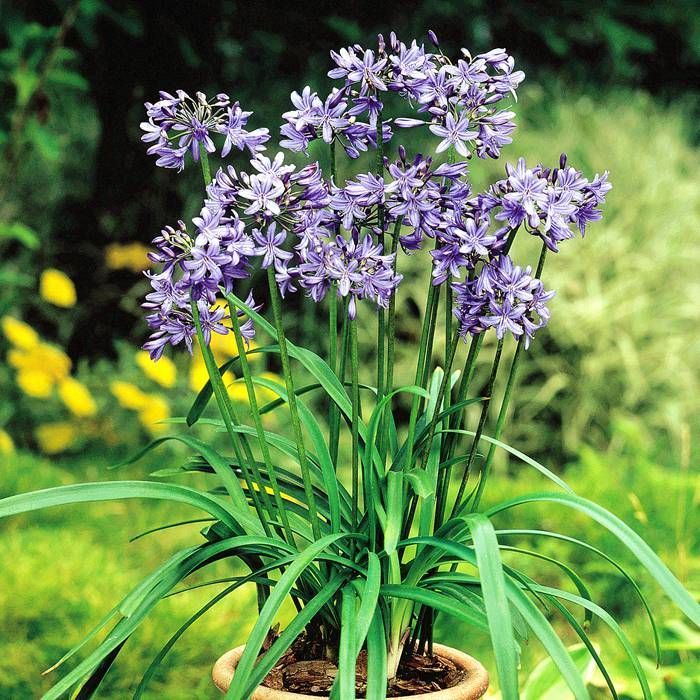Agapanthus Expanding Problems: Dirt, Sunshine, and Watering
Agapanthus Expanding Problems: Dirt, Sunshine, and Watering
Blog Article
Understanding the Art of Agapanthus Treatment: Essential Actions for Healthy And Balanced Development and Vibrant Blossoms
In the world of gardening, the cultivation of agapanthus stands as a satisfying endeavor for those that look for to nurture these elegant blooming plants. With their striking blooms and elegant vegetation, agapanthus has actually caught the interest of garden enthusiasts worldwide. However, achieving optimum growth and vibrant blooms calls for a nuanced strategy that encompasses different essential steps. From selecting the best selection to understanding trimming methods, the trip in the direction of growing growing agapanthus plants is complex and holds the essential to unlocking the full potential of these botanical gems.

Choosing the Right Agapanthus Variety

When picking the appropriate Agapanthus selection for your garden, consider factors such as climate suitability, blossom shade, and growth practice. Agapanthus, generally known as Lily of the Nile or African lily, can be found in a variety of colors ranging from tones of blue and purple to white. Choose a flower color that matches your existing garden palette to create an unified landscape. In addition, think about the environment in your region to guarantee the Agapanthus variety you select can prosper in your specific problems. Some selections are a lot more forgiving of chilly temperatures, while others choose warmer climates. Recognizing the development habit of different Agapanthus selections is crucial for appropriate placement within your garden. Some selections have a clumping development behavior, suitable for boundaries or containers, while others have an even more spreading nature, suitable for ground cover or mass growings. By meticulously reviewing these factors, you can choose the excellent Agapanthus selection to enhance the beauty of your yard.
Perfect Planting Problems
Thinking about the optimum environmental demands is essential for successful Agapanthus growing. Agapanthus thrives in well-draining soil with a somewhat acidic to neutral pH degree. When planting, select a location that receives complete sunlight to partial color. In hotter environments, supplying some afternoon shade can stop scorching of the leaves. Agapanthus plants are delicate to cold temperatures and ought to be protected from frost throughout cold weather.
To guarantee healthy and balanced growth and lively flowers, plant Agapanthus bulbs at a deepness of regarding 2-4 inches and area them 8-12 inches apart. Including raw material, such as garden compost, to the dirt can enhance drain and fertility, promoting durable origin growth. Mulching around the base of the plants aids preserve dampness and suppresses weed growth. Regular watering is essential, particularly throughout the expanding season, to keep the soil continually wet but not soaked.
Watering and Feeding Tips
Keeping correct dampness levels and supplying necessary nutrients are essential aspects in the care regimen for Agapanthus plants. It is essential to strike a balance when it comes to sprinkling Agapanthus. These plants favor consistently wet soil yet are at risk to root rot if overwatered. During the expanding season, water deeply when a week, ensuring the soil is well-draining to stop waterlogging. In hotter environments or throughout periods of dry spell, more constant my sources watering might be necessary to maintain the soil evenly damp. Nevertheless, reduce watering in the winter months to stop waterlogged problems.
Fertilizing Agapanthus is necessary for advertising healthy development and respected blooms. Use a balanced fertilizer, such as a 10-10-10 formula, in the early spring as new development emerges. By complying with these watering and fertilizing tips, you can ensure your Agapanthus plants prosper and create lively, resilient flowers.
Trimming Methods for Agapanthus
Trimming Agapanthus plants at the suitable times and with proper techniques is important for preserving their health and promoting ideal growth and flowering. The optimal time to trim Agapanthus is in late winter months or very early spring before brand-new development emerges. Beginning by getting rid of any dead or yellowing leaves near the base of the plant. Cut them as short as possible without harming the arising shoots.
Deadheading spent blossoms can also redirect the plant's energy right into creating even more blossoms rather than setting seeds. If you want to accumulate seeds for proliferation, leave some flowers to fully grown and completely dry on the plant.
Remember look at this now to utilize tidy, sharp tools to make exact cuts and decrease the threat of presenting illness. Agapanthus. Regular pruning will certainly help keep your Agapanthus looking healthy and cool while making sure a bountiful screen of beautiful blossoms
Dealing With Typical Bugs and Diseases
After ensuring proper trimming strategies for Agapanthus, it is important to resolve typical parasites and illness that can impact the health and wellness and vigor of these plants. Agapanthus plants are normally durable but can still fall victim to certain problems. One usual pest that impacts Agapanthus is the Agapanthus gall midget. This tiny, orange fly lays its eggs in the foliage, causing altered development and blossom buds that stop working to open up. To battle this pest, prune and destroy any kind of affected plant components and take into consideration making use of insecticidal soap.
One more common issue is fungal leaf area, which provides as dark sores on the fallen leaves. To stop fungal illness, ensure great air blood circulation around the plants, stay clear of overhanging watering, and eliminate any contaminated fallen leaves immediately. Furthermore, Agapanthus plants can experience root rot if they are planted in improperly draining pipes soil. To stop this, plant Agapanthus in well-draining dirt and stay clear of overwatering. By being watchful and taking prompt activity against diseases and parasites, you can aid your Agapanthus plants prosper and produce vibrant flowers.

Final Thought
In verdict, mastering the art of agapanthus care includes picking the appropriate selection, supplying suitable growing problems, proper watering and fertilizing, appropriate trimming methods, and addressing common pests and illness. By complying with these vital steps, you can ensure healthy and balanced development and vibrant flowers for your agapanthus plants. Keep in mind to frequently check and preserve your plants to promote their total wellness and longevity.
To make sure healthy development and lively blossoms, plant Agapanthus bulbs at a deepness of regarding 2-4 inches Recommended Reading and room them 8-12 inches apart. By following these watering and fertilizing suggestions, you can guarantee your Agapanthus plants flourish and generate lively, durable flowers.
One usual parasite that affects Agapanthus is the Agapanthus gall midge. Additionally, Agapanthus plants can experience from root rot if they are planted in improperly draining soil. By following these vital actions, you can ensure healthy growth and lively flowers for your agapanthus plants.
Report this page